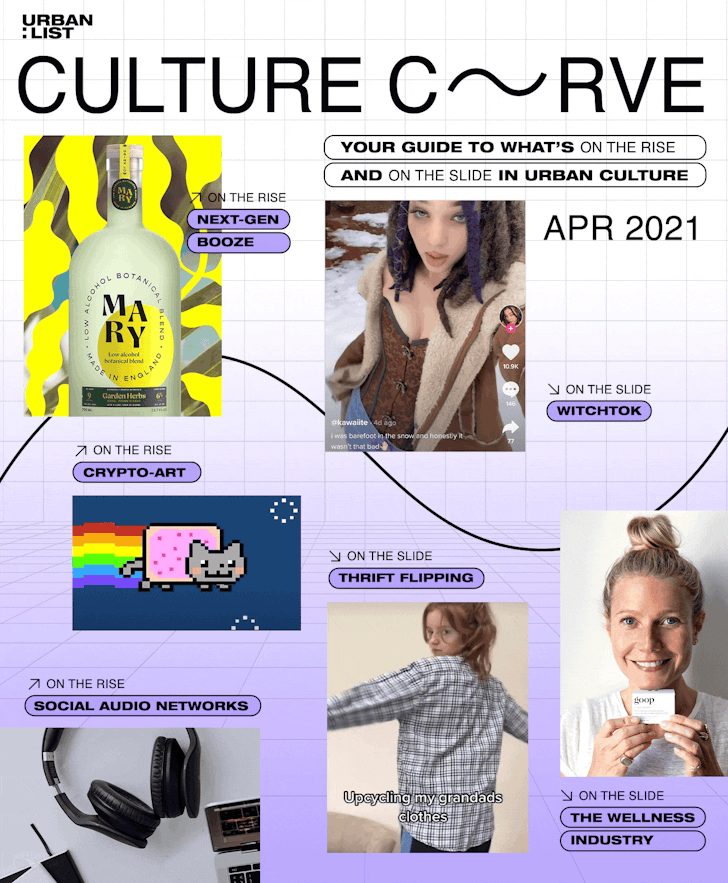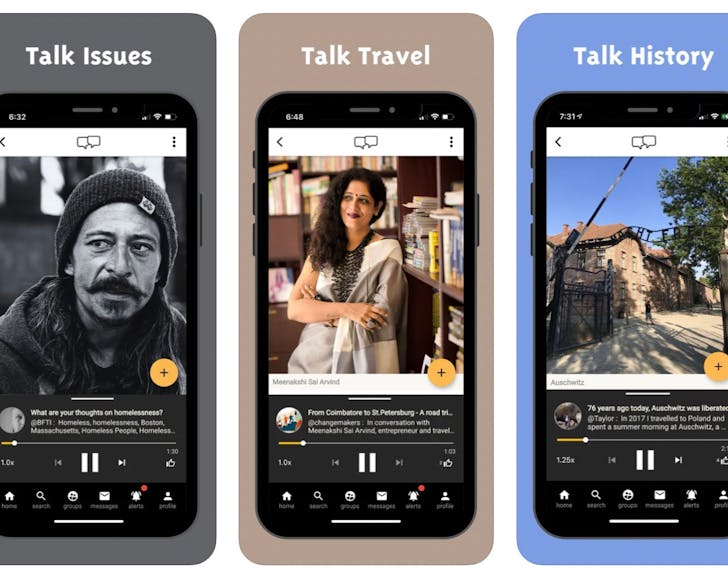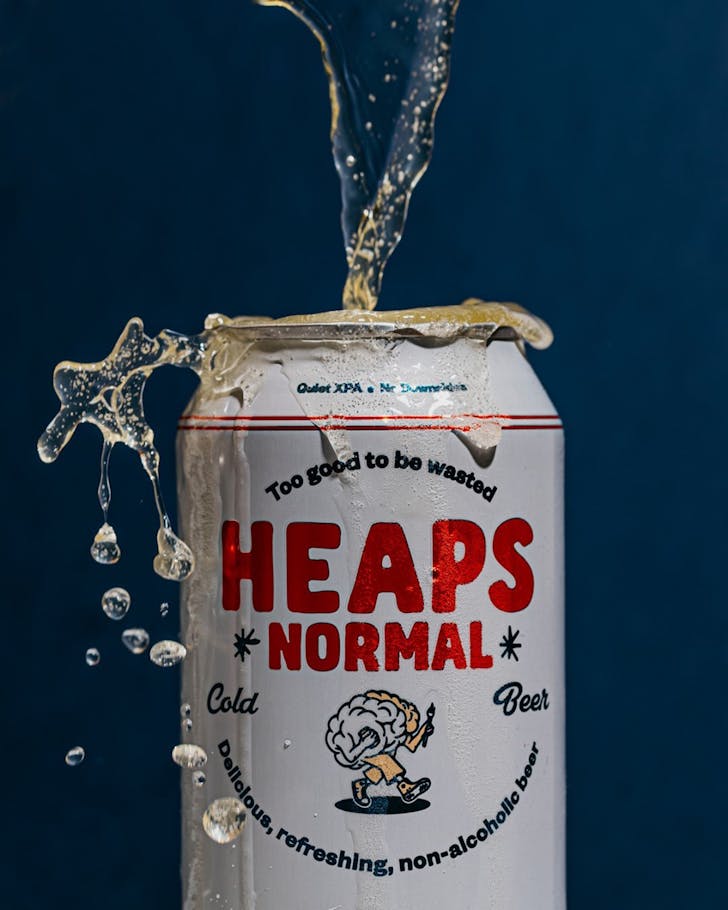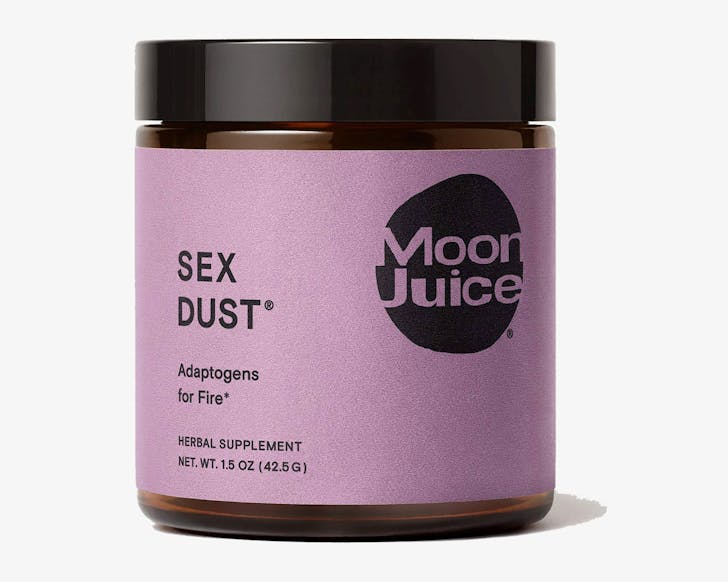Welcome to Culture Curve—your go-to guide to what’s on the rise and slide in culture in April 2021.
This month, we dive into the wild world of NFTs and crypto art, tracking the cashed-up art movement that could be both brilliant for creative ownership, but also seriously harmful for the planet. We also check out Clubhouse, the audio social network everyone is talking about, as well as the raft of micro-podcasting and voice memo networks getting noisy right now.
Elsewhere, the whitewashed wellness industry is under fire as more inclusive wellness concepts begin to pop up, and thrift flipping might be saving clothes from landfill, but it isn't the sustainable fashion silver bullet we'd love for it to be.
Here’s what’s on the rise and on the slide in culture right now.
- Audio Social Networks
- Crypto Art
- Mindful Drinking
- The Wellness Industry
- Thrift Flipping
- #WitchTok

ON THE RISE
Listen In, Audio Social Networks Are Making A Lot Of Noise Right Now
 The future of social media might be audio. And it’s not as left-of-field as you might think. Alongside the rise and rise of rapid-fire video content via TikTok and Instagram Reels, audio makes sense as an intimate, raw, unedited, even vanity-free alternative. Hinged on authentic connection rather than comedy or clout, audio feels primed for a 2021 world—easing screen fatigue, and providing a welcome dose of intimacy during extended lockdowns that other social networks cannot.
The future of social media might be audio. And it’s not as left-of-field as you might think. Alongside the rise and rise of rapid-fire video content via TikTok and Instagram Reels, audio makes sense as an intimate, raw, unedited, even vanity-free alternative. Hinged on authentic connection rather than comedy or clout, audio feels primed for a 2021 world—easing screen fatigue, and providing a welcome dose of intimacy during extended lockdowns that other social networks cannot.
In fact, if you think about the saturation of podcasts, improved audio tech like smart headphones, the popularity of ASMR, and the performative, often insincere nature of basically all other social media platforms, the stage is pretty well set for audio.
Making the most noise right now is Clubhouse, an invite-only audio chatroom, where listeners can drop into dinner party-like conversations. On the app, you can tune into live amateur astrology readings, interviews with high-profile people (like Elon Musk), strangers chatting, business pitches, and music industry conversations. While Clubhouse has revealed plans to open the app up in the near future, invites are in such high demand that they have become a hot commodity on Reddit, Craigslist, and eBay.
Other audio social network players are swarming in: Cappuccino is described as “a daily personal audio show featuring your friends” and involves voice memos you can share with friends and family; Discord was once a voice hub for gamers but rebranded in 2020 under the slogan “Your Place To Talk And Hang Out”; and then there’s Spoon Radio, Riffr social (micro)podcasting, and Wavve, which helps you cross-post audio content to more visual platforms. The newest audio social network is Swell, which involves pre-recorded soundbites up to five minutes in length. A bit like bite-sized podcasts with the opportunity to leave a voice mail-like comment, users can browse topics, tune in, and leave audio replies in their own time. Even the IKEA catalogue has switched to audio, reforming as a four-hour-long podcast.
For now, moderation, safety, and accessibility are all challenges for audio networks. In mid-2020, Twitter dropped voice Tweets, and later in the year launched Twitter Spaces, host-moderated audio conversations between two people or more with the added benefit of closed captioning in order to be more accessible.
Wired described the rise of audio networks as, “listening to a podcast where you could talk back.” With so many players in the mix, it remains to be seen which network will rise to the top, how influencers or the equivalent of TikTok creators might lead or shape content, where brands can weigh-in, and ultimately if audio interactions will become routine for the masses or remain more niche.
Space Cat, Crypto Art, And NFTs—Awesome Art Movement Or Planet Destroyer?
 We’ve had rococo, realism, impressionism, cubism, futurism, and conceptual art. And now? A digital art movement is emerging from the belly of the blockchain that’s really shaking things up in the art world and drawing out stacks of cash in the process. Enter: crypto art. As with anything blockchain-related—it really does boggle the mind—but the rise of crypto art right now feels like a second coming for bitcoin and the blockchain, pulling the idea out of its often veiled obscurity and into the mainstream.
We’ve had rococo, realism, impressionism, cubism, futurism, and conceptual art. And now? A digital art movement is emerging from the belly of the blockchain that’s really shaking things up in the art world and drawing out stacks of cash in the process. Enter: crypto art. As with anything blockchain-related—it really does boggle the mind—but the rise of crypto art right now feels like a second coming for bitcoin and the blockchain, pulling the idea out of its often veiled obscurity and into the mainstream.
Basically, crypto art is digital art with a fancy unique digital token attached called an NFT or non-fungible token. Hosted on a blockchain, the NFT signifies it’s the original and it can be bought, sold, and collected like fine art. Being digital art (essentially a JPEG in many cases), of course, the artwork can be copy-pasted into infinity, but the NFT cannot, so your run-of-the-mill JPEG suddenly has a dollar value. And in many recent cases, the value has been six figures and more.
In February this year, a crypto art version of the 2011 Nyan Cat meme sold for USD $590,000. A joke piece of crypto art created by The New York Times sold for about AUD $738,000. Mike Winkelmann AKA Beeple made history when he sold a JPEG titled Everydays: The First 5000 Days for USD $69.3 million at a Christie's auction in March.
While the big buzz around NFTs has largely been in the art world, NFTs can currently be applied to anything digital—the potential is big. Think music, videos, music videos—anything. In fact, the founder of Twitter, Jack Dorsey, just sold his first Tweet as an NFT for a very cool USD $3 million. The full reach of NFTs is only emerging too, with Nike, ever the innovators, currently holding a patent for a method to verify sneakers’ authenticity via an NFT system. It’s called CryptoKicks and it’s the first application of NFTs to physical objects.
Despite the hype and all the cash—NFTs are copping a bunch of criticism too. Aside from any personal issue you might have with someone dropping enormous amounts of money on a JPEG (just think where else that money might be spent), NFTs are really bad news for greenhouse gas emissions. Space Cat, for example, has a carbon footprint equivalent to an EU resident’s electricity usage for two months, due to the amount of power needed to fuel the blockchain. Plans for more eco-friendly NFTs are popping up, but it’s not really clear how effective or realistic they might be. So—21st-century art movement for the history books, or gross example of digital consumerism gone very awry? Only time will tell.
Take A Sip From The New World Of Mindful Drinking
 Trends in the world of booze aren't typically very ground-breaking: Chardonnay is cool again, mezcal is the new tequila, craft beer and brewpubs are taking over, yes way rosé. However, across the last twelve months, an entirely new approach to drinking has really started to dominate. Under the heady influence of the wellness industry, once-obscure concepts like zero alcohol gin, low ABV beer, low-calorie hard seltzer, and hangover-free wine have started to become mainstream, lining the shelves at most bottleshops.
Trends in the world of booze aren't typically very ground-breaking: Chardonnay is cool again, mezcal is the new tequila, craft beer and brewpubs are taking over, yes way rosé. However, across the last twelve months, an entirely new approach to drinking has really started to dominate. Under the heady influence of the wellness industry, once-obscure concepts like zero alcohol gin, low ABV beer, low-calorie hard seltzer, and hangover-free wine have started to become mainstream, lining the shelves at most bottleshops.
As much as we'd love to blame the rise of mindful drinking squarely on our growing fondness of yoga, mediation, healthy eats, and self-care—this whole new world of "healthy" booze does reflect a general cultural shift that's been emerging across the last few decades, with alcohol consumption in Australia steadily declining year-on-year since the 1960s. Even across 2020 (and all the home-delivered bottled cocktails and Zoom drinks) alcohol consumption in Australia declined.
Speaking to Urban List, founder of the new Aussie booze-free bottlo SansDrinks, Irene Falcone says, "If you can go out to a barbecue, and drink down nine cans of beer, that tastes exactly like your favourite beer... then you can get in the car, you can drive your kids to the beach in the afternoon for an ice cream, you can go home, feel fantastic, get up, go to the gym the next morning and feel amazing, why wouldn't you?"
But it's not just the fog-free, hangover-less aspect of mindful drinking that's inspiring drinkers in Australia—it's the simple choice of being able to sip something healthier too. Co-founder of 0.5% craft beer Big Drop Rob Fink says, "On a Wednesday night, I’m not gonna drink alcohol, but I want a couple of beers. For me, It’s about making my fridge selection in my house even more fantastic.”
“It's like cigarettes," adds Falcone. "When did it stop being cool to smoke? All of a sudden it stopped being cool to smoke and we stopped smoking.”
ON THE SLIDE
Is The Wellness Industry Well-Intended?
 The history of wellness as we know it today is a pretty colourful one. What's now reported to be a USD $4.5 trillion industry—raking in everything from weight loss to activewear, spa days, skincare, and yoga retreats—has many various origins and influences, some innocent, some not so innocent. Like Roman spas, Freud, Gandhi, and LSD culture, before we get to Dr Phil, Gwyneth Paltrow, green juice cleanses, crystals, and yoni eggs.
The history of wellness as we know it today is a pretty colourful one. What's now reported to be a USD $4.5 trillion industry—raking in everything from weight loss to activewear, spa days, skincare, and yoga retreats—has many various origins and influences, some innocent, some not so innocent. Like Roman spas, Freud, Gandhi, and LSD culture, before we get to Dr Phil, Gwyneth Paltrow, green juice cleanses, crystals, and yoni eggs.
While the shaky science behind many wellness trends is a universally accepted misdemeanour for most, in 2021 some increasingly outdated elements of the wellness industry have come under fire for being white-washed, classist, inaccessible, and ultimately dangerous.
A new podcast from US journalists Michael Hobbs (You're Wrong About) and Aubrey Gordon (of Yr Fat Friend fame) called Maintenance Phase is set on debunking decades of beauty and wellness myths, one ep at a time. Gordon and Hobbs touch on the very (very) problematic history of Weight Watchers, BMIs, the "Master Cleanse", and The Biggest Loser, before they take aim at an LA-based wellness brand called Moon Juice.
Founded by Amanda Chantal Bacon, Moon Juice is made up of a collection of expensive mushroom-based adaptogens like "Sex Dust" and "Spirit Dust" (both retail for about AUD $54). Like Paltrow's Goop platform, Moon Juice is wildly popular but still deeply criticised. And in 2021, its criticism feels deserved. Moon Juice represents a pricey breed of wellness catering to a very specific crowd: wealthy white women with the time, the agency, and the cash to self-indulge. And this Moon Juice-level roasting is starting to get a whole lot louder.
Championing a very different wellness message is the founder of boundary-flipping hip-hop yoga studios Yogahood and Gyal Flex, Sanchia Legister. Recently named the global brand ambassador for Lululemon, Legister's message of wellness is much more forgiving than what's come before, letting go of what's now being called "self-care shame". Other emerging concepts challenging the wellness status quo include OYA Retreats in the UK, which offers holistic wellness escapes for women of colour, Black Girls Breathing does meditation and breathwork for black women, and Self magazine. Once an 80s-era health mag featuring tanned tennis stars and diet tips, these days Self zeroes in on a much more inclusive concept of health and wellness, with body neutral workouts, affirmations, and food-positive recipes, from a diverse collection of wellness experts.
The Sizeable Issue With Thrift Flipping
 Thrift flipping is huge on Depop and the hashtag #ThriftFlip has a casual 1.2 billion views on TikTok. The practice basically involves scouring vintage fashion or charity stores for cool finds, snapping up as much as you can, then selling—or flipping—your wares via platforms like Depop and eBay. An offshoot of the upcycling and DIY fashion movements, thrift flippers often upgrade their found pieces, sewing them into something new entirely, or adding new elements, destressing, tailoring, chopping, and changing. They then dial up the price and make a sweet little profit. Seems like a fairly innocent, eco-friendly, creative way to prevent clothes ending up in landfill and make some cash, right?
Thrift flipping is huge on Depop and the hashtag #ThriftFlip has a casual 1.2 billion views on TikTok. The practice basically involves scouring vintage fashion or charity stores for cool finds, snapping up as much as you can, then selling—or flipping—your wares via platforms like Depop and eBay. An offshoot of the upcycling and DIY fashion movements, thrift flippers often upgrade their found pieces, sewing them into something new entirely, or adding new elements, destressing, tailoring, chopping, and changing. They then dial up the price and make a sweet little profit. Seems like a fairly innocent, eco-friendly, creative way to prevent clothes ending up in landfill and make some cash, right?
Well, with thrift flipping now simple to set up and available to Gen Zers wanting to buy in, it's actually starting to become more harmful than helpful. To begin with, flippers en masse are emptying Vinnies and Oxfam shops at the expense of the people in need that visit charity stores for the accessible price point, not to stock up their Depop shop.
The thrift flipping trend is also now being condemned for its undercurrents of fat-shaming and fatphobia too. Most of the flipping videos on TikTok involve plus-size garments being trimmed down into petite matching sets, made for thin bodies. With affordable, size-accessible plus-size vintage clothes already few and far between, thrift flippers are exercising a level of "size privilege" and taking more clothes off the racks, leaving less for those who might like or need to buy them.
Speaking out on the issue, TikToker and avid flipper Megan McSherry AKA @acteevism said there needed to be a new level of conscious thrift flipping in play. "A lot of thrift flips involve taking something in a larger size and flipping it to fit a smaller body," she explained. "The fashion industry already has issues with size inclusivity, and those issues are only amplified in the sustainable fashion industry... If you benefit from size privilege I encourage you to reflect on that before you buy something second-hand in a larger size. Use your privilege to make space for the people who are left out of the sustainable fashion industry."
#WitchTok: Double, Double Toil And Trouble
 Back in January 2020, a new wave of witchcraft was on the rise and a community of TikTok creators was setting a new hashtag on fire: #WitchTok. Probably inspired by the uncertainty and turmoil in the world around them, as well as Netflix's stylish series The Chilling Adventures of Sabrina, the platform's vast Gen Z audience was dipping into astrology, flipping tarot cards, casting spells, and identifying with the occult.
Back in January 2020, a new wave of witchcraft was on the rise and a community of TikTok creators was setting a new hashtag on fire: #WitchTok. Probably inspired by the uncertainty and turmoil in the world around them, as well as Netflix's stylish series The Chilling Adventures of Sabrina, the platform's vast Gen Z audience was dipping into astrology, flipping tarot cards, casting spells, and identifying with the occult.
Twelve months ago, just a few million videos surfaced under the hashtag. Fast forward to now, and you’ll find well over nine billion videos—stitching together feminine resistance, self-care, and a new sort of social media spiritual mysticism. In that sense, at a glance WitchTok is refreshing. But this witchy renaissance has since been ticked off for being insincere and out of step with the level of cultural respect demanded by movements like Black Lives Matter.
TikTok is known to breed flash-in-a-pan subcultures, and WitchTok is the latest to be called into question. Wielding mysticism borrowed from the specific spiritual practices of various oppressed peoples—like "smudging" white sage and burning palo santo—WitchTok has become the perfect example of commodified spiritualism at the expense of the cultures that created it.
Speaking to Mashable, Latinx artist with Wixáritari Indigenous Mexican heritage Edgar Fabián Frías said, "If you don't know about where the customs you practice come from, figure that out because otherwise, it becomes another form of colonization and theft.”
Keen for more? Check out the previous edition of Culture Curve, where we talk sexual wellness, deadstock, and inclusive histories.
Design credit: Kate Mason
Image credits: Swell, Pinterest, Heaps Normal, Moon Juice, Luis Montejo, Viva Luna Studios
.jpg?auto=format,compress&w=728&h=486&fit=crop)